A Waterfowler's Charcuterie Board
These artistic pairings of duck and goose meats with other snack-sized foods just might be the perfect party fare
These artistic pairings of duck and goose meats with other snack-sized foods just might be the perfect party fare

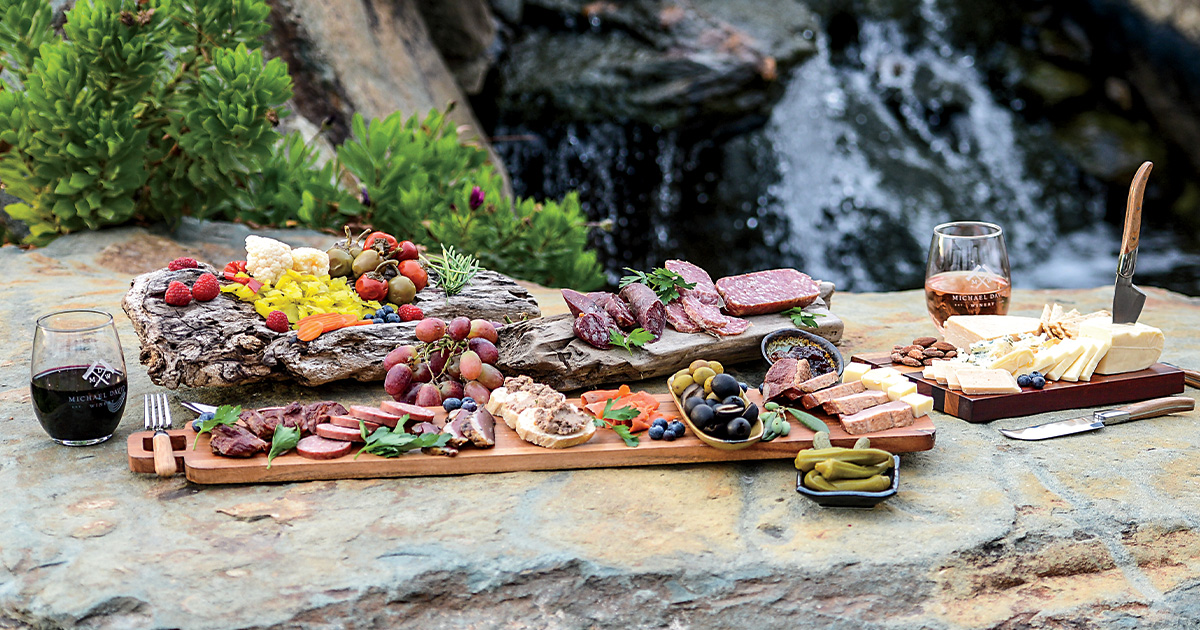
Charcuterie is a French term describing meat that has been cold-cooked, cured, or smoked—think sausage, bacon, ham, and pâté. The art of charcuterie has been around since the 15th century, but interest in this type of cooking has enjoyed a recent renaissance, thanks to the popularity of charcuterie boards, which pair these meats with cheeses, pickles, sauces, olives, nuts, and other ingredients artfully displayed on a cutting board. These beautiful creations have become standard cuisine at cocktail parties, backyard barbecues, picnics, and other events where finger food is the order of the day. I’ve even heard of inspired duck hunters preparing charcuterie boards to share with their buddies in the duck blind.
No matter how or where you want to serve charcuterie, it’s easy to incorporate waterfowl meats. The lean muscles of ducks and geese can be used in many charcuterie recipes, including deli meats like pastrami or salami. Most recipes for cured and smoked meats work well with ducks and geese, but it’s often a good idea to incorporate some form of fat into the mix to ensure that the finished product will not be too dry. Fat equals flavor and moisture. Here are four recipes that can assume a prominent place on your board, along with some additional ideas to help take your charcuterie creations to the next level.
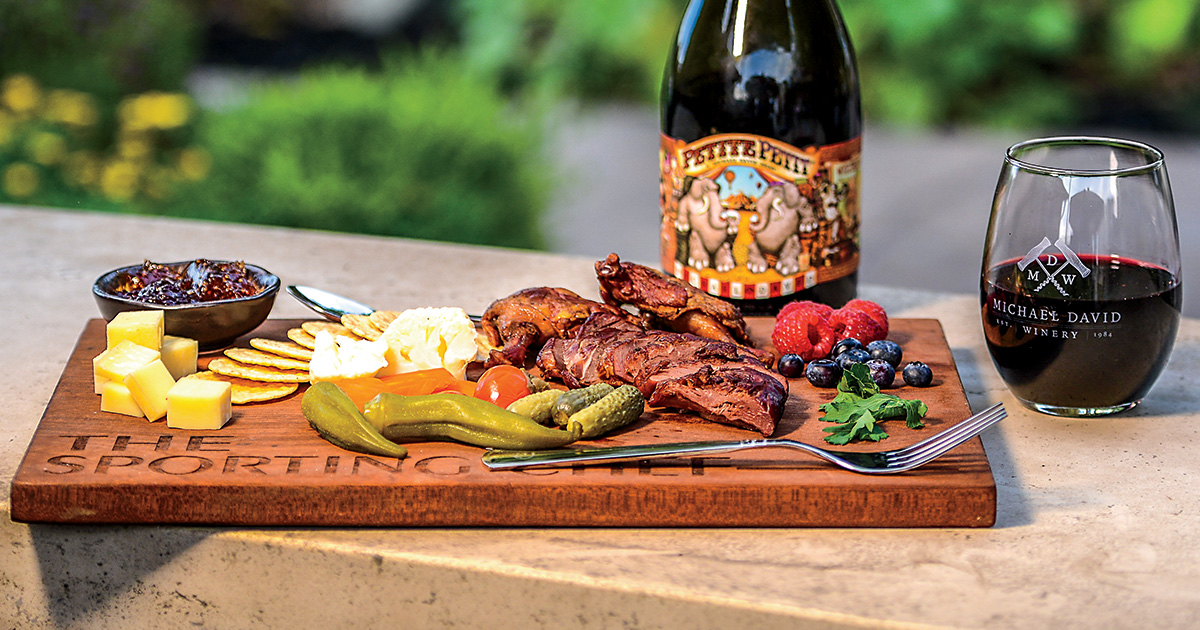
Smoking works well with whole ducks or with breast fillets. For best results, brine the meat first and then cook it over low heat in a smoker or even a backyard grill loaded with wood chips and rosemary.
Smoking whole ducks or duck parts requires no special equipment. If you don’t own a smoker, you can use your backyard grill. Just load a metal container with wood chips and set it over the flame, then crank up the heat to start the wood chips smoking. If you have a plentiful supply of fresh rosemary nearby, add a handful of it to the wood chips to create a billowy, aromatic smoke. Lower the heat, place the brined meats on the grill as far away from the heat source as possible, close the lid, and you are smoking.
There aren’t any shortcuts when it comes to smoking meat. It is a low-and-slow process. If you rush it, the meat will be crisp on the outside and undercooked at the center. Keep the meat from drying out by maintaining a smoking temperature of 200 to 225 degrees.
Avoid using sea ducks and divers, since their flavor can be a bit more pronounced. The best candidates for smoking are plucked larger ducks like mallards, pintails, and gadwalls. If all you have on hand are skinned breast fillets, you can still smoke them, but marinate them in olive oil for a few hours before smoking to help keep the meat moist.
The secret to smoking waterfowl is the brine. A proper brine relaxes the muscle fibers, which allows them to hold more moisture. It will also add a mild, salty flavor to the meat, so use less salt in any recipe that you might be using for an external seasoning rub. Great brine blends are available at your favorite outdoor retailer, but you can also make one at home.
Ingredients:
Preparation:
1. To make the brine, combine 2 cups water in a saucepan with the salt and brown sugar. Heat while stirring until the salt is dissolved. Transfer to a large container and cool to room temperature, then stir in 1/2 gallon of water and the ice cubes.
2. Submerge whole ducks or fillets in the brine and place in the refrigerator. For whole ducks, brine for 12 to 18 hours. Fillets should be brined for 10 to 12 hours.
3. Remove duck from brine. Pat dry and place on a rack in the refrigerator with a drip pan underneath and allow the duck to air dry for an hour or two. Place ducks in the smoker. Whole ducks will take 2 to 3 hours to reach an internal temperature of 145 degrees. Breast fillets will be done in about an hour. If you like your smoked meats more crispy on the outside, crank up the heat for the last 10 to 15 minutes.
4. Serve with a full-bodied red wine like petite sirah, cabernet sauvignon, or Bordeaux.
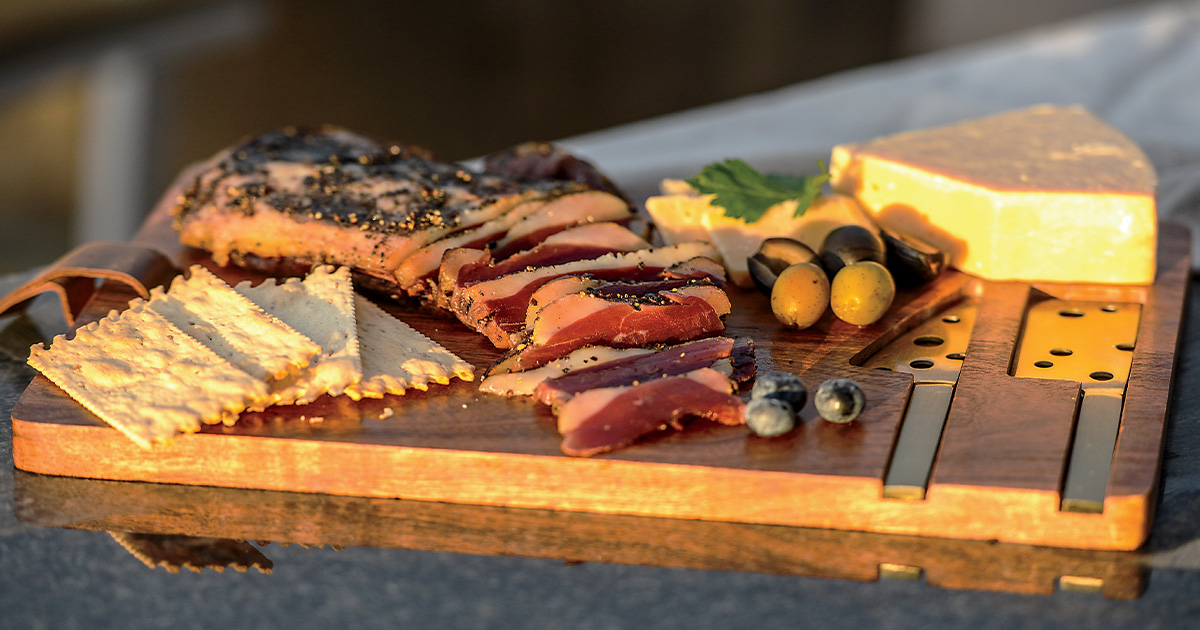
Pastrami is a common addition to many charcuterie boards. The key to this recipe for goose pastrami is curing the meat in a brine for 5 to 7 days to extract moisture and add flavor. Apply a rub, smoke it low and slow, and you’ll create a dish that your guests won’t stop raving about.
Making pastrami from duck and goose breast fillets is an easy way to impress your friends with your culinary expertise. Pastrami is much like corned beef, but it is smoked after a week or so of curing. The cure extracts moisture from the meat and discourages bacteria growth.
Before smoking, the meat must first be brined, preferably with a wet brine. Many chefs use Pink Curing Salt #1, also called Instacure #1 or Prague Powder #1, which contains sodium nitrite and turns the meat pink, rather than gray, after smoking. It also helps preserve the meat for longer storage and adds a distinct cured meat flavor. Pink Salt #1 is not always easy to find locally, so I suggest using Morton Tender Quick instead. It also contains sodium nitrite and is available at most grocery stores.
Ingredients:
Preparation:
1. Make the brine by heating 2 cups of water and the Morton Tender Quick in a saucepan over medium heat until completely dissolved. Cool completely, then add the ice water.
2. Place goose breast fillets in the brine, either in a container with a lid or a zip-top bag. Make sure that the fillets are completely submerged in the brine. Transfer to the refrigerator and allow 5 to 7 days for the brine to penetrate the meat. You can make certain that the brine has penetrated by cutting a slit into the middle of one of the fillets and checking to see if the flesh is pink from top to bottom. If the center is still a little gray, brine for another 2 days. Once the fillets are ready, rinse them with cold water and pat dry.
3. Combine rub ingredients and press the mixture into all sides of the goose breast fillets. Place the fillets in a 200- to 250-degree smoker until the internal temperature of the meat reaches 135 to 145 degrees. Allow to cool before slicing.
4. Pair with assorted cheeses, grapes, and berries as well as a big, peppery zinfandel.
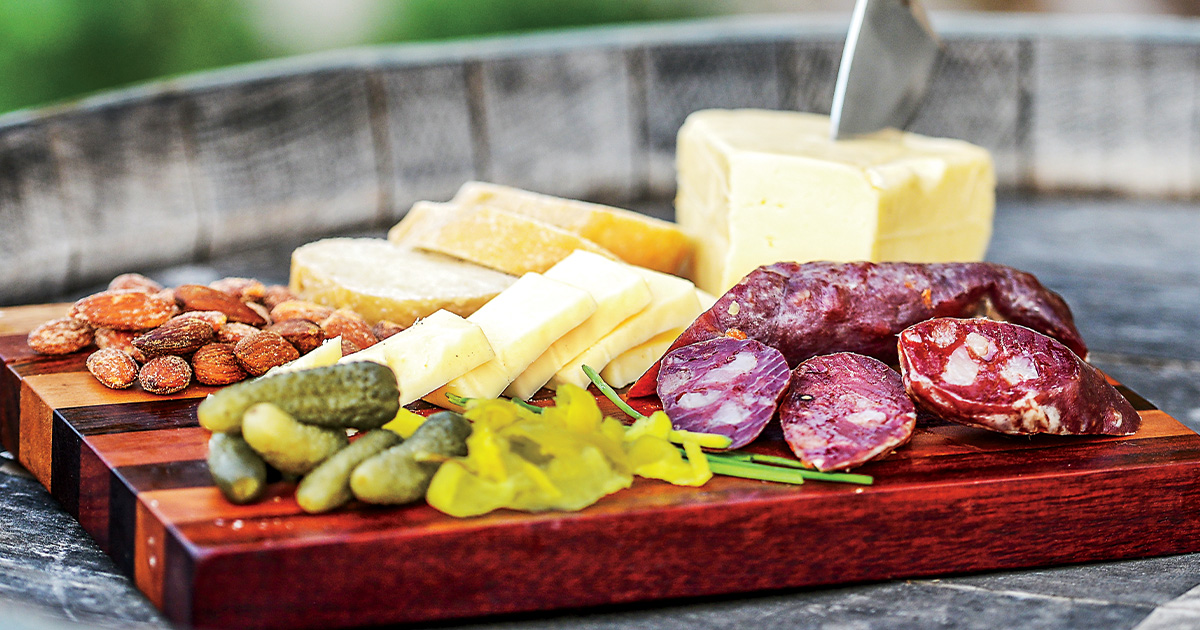
This recipe works for stuffed links or patties. If you are new to making sausage, you might want to start by making patties rather than trying to stuff casings. Another option is to purchase a game sausage kit that includes everything but the meat. Using a meat grinder is best. You can also pulse chunks of the meat in a food processor, but be careful not to over-process them. The meat should be about pea-sized when done.
When making sausages with casings, you will need a grinder or sausage stuffer to get the job done. Place the grinder parts and the meat in the freezer for an hour or so before grinding to keep the meat from turning into a paste and sticking to the grinder. Soak the casings for an hour or two in warm water before stuffing.
Ingredients:
Preparation:
1. Place duck and pork shoulder chunks in a meat grinder or food processor and grind thoroughly. Then place the ground meat in a large bowl, add remaining ingredients, and mix completely using a mixer, tumbler, or your hands.
2. For patties, form the mixture into 3-inch balls, then press down into patties on a lightly greased skillet over medium heat. Brown on both sides until done.
3. If stuffing into casings, fill the entire length of the sausage casing and twist into links about every 6 inches. Refrigerate overnight before cooking or freezing. Links can be tied or clipped and refrigerated for 4 to 5 days or frozen for up to 1 year. The sausages can be smoked, grilled, or boiled.
4. Serve cold with some sweet mustard and a frosty glass of your favorite beer.
A charcuterie board would not be complete without a variety of cheeses. Put your personal preferences aside and display an assortment of flavors and textures. You might not enjoy a pungent aged blue cheese, but many gastronomes are drawn to the aroma like a bird dog to a covey of quail. If your guests will be mostly standing, not seated, prepare the cheeses in one- or two-bite slices or cubes to make them easier to eat while holding a plate in one hand and a glass of wine in the other.
These can include a wide variety of pickles, cornichons, marinated vegetables, olives, roasted peppers, carrots, celery, beets, green beans, artichoke hearts, tomatoes, asparagus—you get the idea. Use the freshest seasonal vegetables and include a variety of flavors and colors.
Take a break from peanuts and serve something more interesting. Marcona almonds, hazelnuts, and smoked or flavored nuts are a welcome addition to any charcuterie board.
Everyone likes to dip what’s on the charcuterie board into a sauce that makes it even better. Standard sauces and dips include salsas, mustard variations, barbecue sauces, and vinaigrettes. Sauces should complement whatever is on the tray. Pair spicy treats with a mild, cool sauce.
It’s a bit disheartening to see a beautiful charcuterie board flanked by a sleeve of soda crackers. Take the opportunity to try something new, like toasted French baguette or multi-grain or herb crackers. Toast should be firm enough to not fall apart when taking a bite, but soft enough not to crumble.
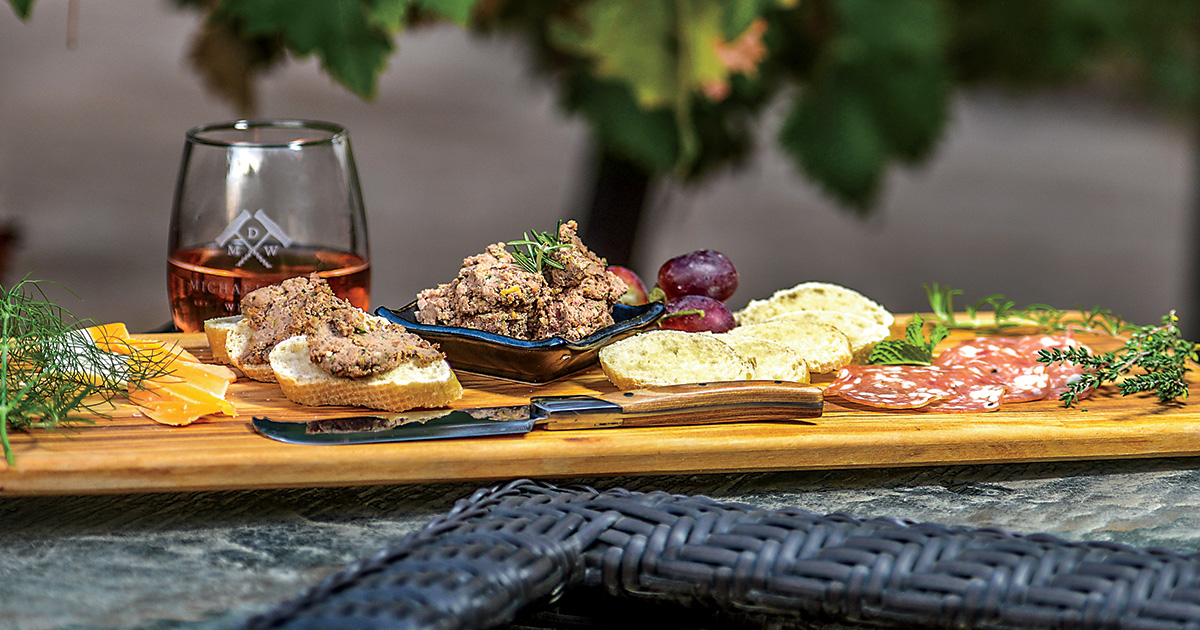
This delicious but surprisingly simple recipe is ready in minutes using a food processor and a handful of ingredients. Paired with crusty French bread and a variety of other charcuterie treats, it’s sure to be one of the most popular boards at any event.
Pâté has an international flair. It’s usually associated with finer restaurants and upscale delicatessens, but preparing it is surprisingly easy. All it takes is a skillet, a food processor, and about 10 minutes. Traditional pâté is made with duck livers, chicken livers, or both. Since most of us don’t save our duck livers, this recipe calls for skinless duck breast fillets, preferably from puddle ducks like mallards and wigeon. If your ducks are dark-fleshed and darker-flavored, save them for another recipe.
Ingredients:
Preparation:
1. In a medium skillet over medium heat, brown bacon evenly. Add duck and sauté until duck is just cooked. Remove duck and drain well on paper towels. Pat dry on all surfaces.
2. Place pistachios and cranberries in a food processor and process until smooth. Add cooled duck and bacon and pulse until smooth. Add shallots, goat cheese, parsley, lemon juice, and cognac or cranberry juice and continue processing until mixture is creamy. Season with salt and pepper. The texture will vary depending on how the duck was cooked and drained or the fattiness of the bacon. If the finished pâté is too thin, add more pistachios or cooked and drained duck meat. If it is too firm, blend in additional goat cheese and another teaspoon of cognac or cranberry juice.
3. Serve on slices of toasted French baguette with a hearty California zinfandel or a more delicate yet complex Oregon pinot noir. If your pâté is more savory or spicy, try serving with a chilled grenache or rosé.
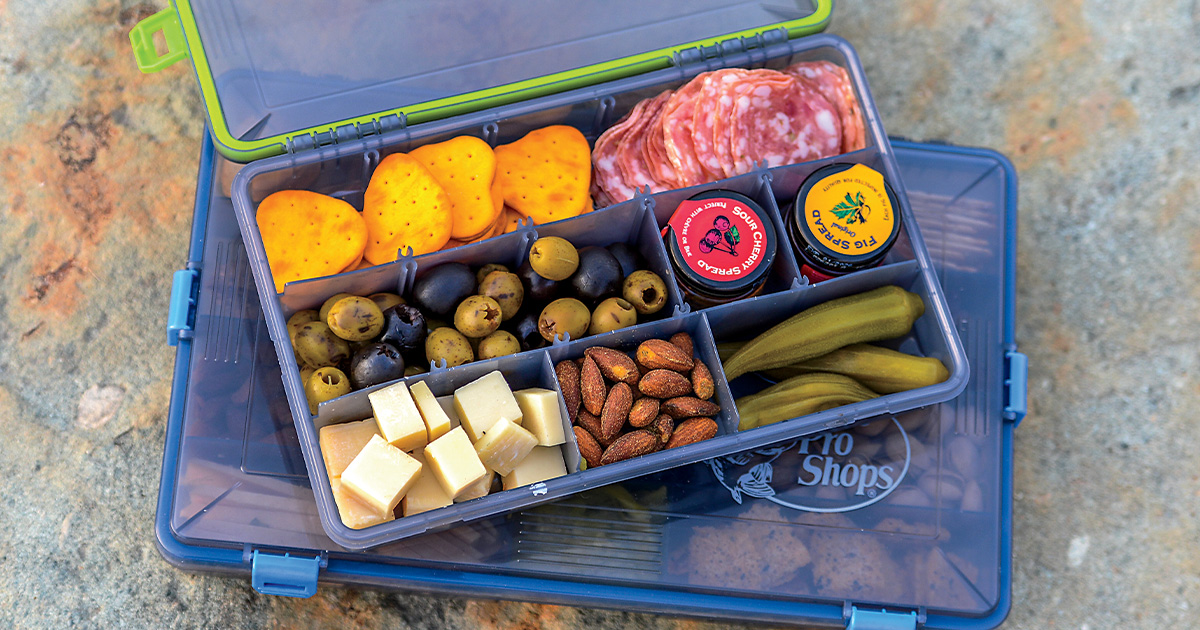
Tackle boxes and trays are perfect for organizing, protecting, and transporting snacks for the field. Note the look on your hunting partners’ faces when you pull out the morning’s selection of meats, nuts, and cheeses.
Ducks Unlimited uses cookies to enhance your browsing experience, optimize site functionality, analyze traffic, and deliver personalized advertising through third parties. By continuing to use this site, you agree to our use of cookies. View Privacy Policy